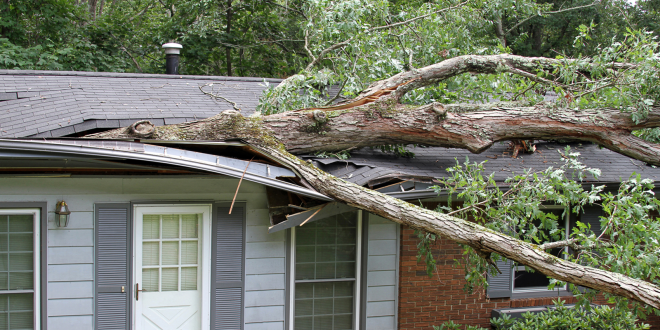Home insurance is your safety net when unexpected events wreak havoc on your property, and storms are definitely a common culprit. Ever wonder exactly what’s covered when a big storm rolls through, bringing down trees and maybe even crushing your car? It can be a bit of a headache to figure out. Let’s break down how home insurance covers storm damage, especially when it comes to those pesky fallen trees and the unfortunate cars they sometimes land on. Hopefully, this will clear up some of the confusion and help you understand what to expect from your policy.
Coverage for Fallen Trees
Tree Removal Coverage
So, does your home insurance policy actually cover hauling away that massive oak that just took a nosedive into your yard? Well, most policies do offer some coverage for tree removal, but there’s usually a catch. Typically, the magic words are “covered structure.” If the tree crashes onto your house or garage, you’re usually in good shape – the policy should cover the cost of getting rid of the tree. But what if it just lands in the middle of your lawn, minding its own business? Sadly, you might find that coverage is pretty limited or nonexistent. It’s a bit of a bummer, I know. Makes you wonder, doesn’t it?
Coverage Limits for Tree Removal
Here’s another thing to keep in mind: policies often have specific dollar limits for tree removal. We’re talking maybe $500 to $1,000 per incident. I’d suggest flipping through your policy’s declarations page; that’s where you’ll find the exact figures. Now, that amount might not be enough to cover the whole shebang, especially if you’re dealing with a really big tree. It’s a good idea to be aware of this potential out-of-pocket expense, so you’re not caught off guard.
Preventative Tree Care
Okay, this is important: home insurance isn’t designed to cover tree care to prevent problems. Think of it this way: If you know you’ve got a tree that’s basically on its last legs – dead, diseased, looking like it’s about to fall over – your insurance company probably won’t pay for its removal. Even if that tree eventually does fall and cause a ton of damage. Regular tree maintenance is key here. Think of it as an investment in preventing bigger headaches later on. Plus, it keeps your property looking spiffy, right?
Coverage for Damaged Cars
When Home Insurance Covers Car Damage
Let’s say a tree takes out your ride. Does your home insurance kick in? Usually, the answer is “maybe,” and it kinda depends. Your homeowners insurance is more likely to step in if the tree came from your property. Even then, your auto insurance is probably going to be the primary payer. Okay, so when would your home insurance definitely be involved? Let’s say you only carry liability coverage on your car (meaning no comprehensive coverage). If the tree that smashed your car fell from your yard, then your home insurance might be the one to call. It’s all a bit of a dance, isn’t it?
The Role of Auto Insurance
For most of us, if a tree falls on our car, we’re looking at the comprehensive coverage portion of our auto insurance. This is the stuff that protects you from things like falling objects, vandalism, and acts of nature. Filing a claim here is usually the most direct route to getting your car fixed up. It’s why we have insurance in the first place, right?
Determining Liability
Now, what happens if a tree from your neighbor’s yard decides to use your car as a landing pad? Things get a bit more complicated. Your auto insurance will likely still handle the initial repairs. But, get this, your insurance company might then try to recover costs from your neighbor’s homeowners insurance. This is called subrogation. It all hinges on whether your neighbor was negligent – like, did they know the tree was a hazard and do nothing about it? Document everything. Pictures, witness statements… the whole nine yards. It will make the whole process a lot smoother.
Filing a Claim and Understanding Your Policy
Documenting the Damage
After a storm, your first move should be to grab your phone and start snapping photos and videos of the damage. Seriously, this is claim-filing gold. Get pictures of the fallen tree, any damage to your home or car, and the general area. More evidence = a smoother process. Think of yourself as a storm damage documentarian. It might sound a little silly, but you’ll thank me later.
Contacting Your Insurance Company
Get in touch with your insurance company ASAP after the storm hits. They’ll walk you through the claims process and send you the necessary forms. Be ready to answer a bunch of questions about the damage, what caused it, and what you did to prevent it. The more prepared you are, the better.
Reviewing Your Policy
Take a good, hard look at both your homeowners and auto insurance policies. Understand your coverage limits, deductibles, and what’s excluded. This will help you keep your expectations in check and avoid any nasty surprises when it comes to out-of-pocket costs. Honestly, knowing your policy inside and out is the best defense against unexpected expenses. It’s a bit like knowing the rules of a game before you start playing, isn’t it?
Storms can be stressful, but understanding how your home insurance covers fallen trees and car damage can ease some of the burden. Take the time to review your policies, document any damage, and don’t hesitate to reach out to your insurance company with questions. And hey, maybe plant a few sturdy, storm-resistant trees while you’re at it! What are your experiences with storm damage and insurance claims?
 seeme
seeme



